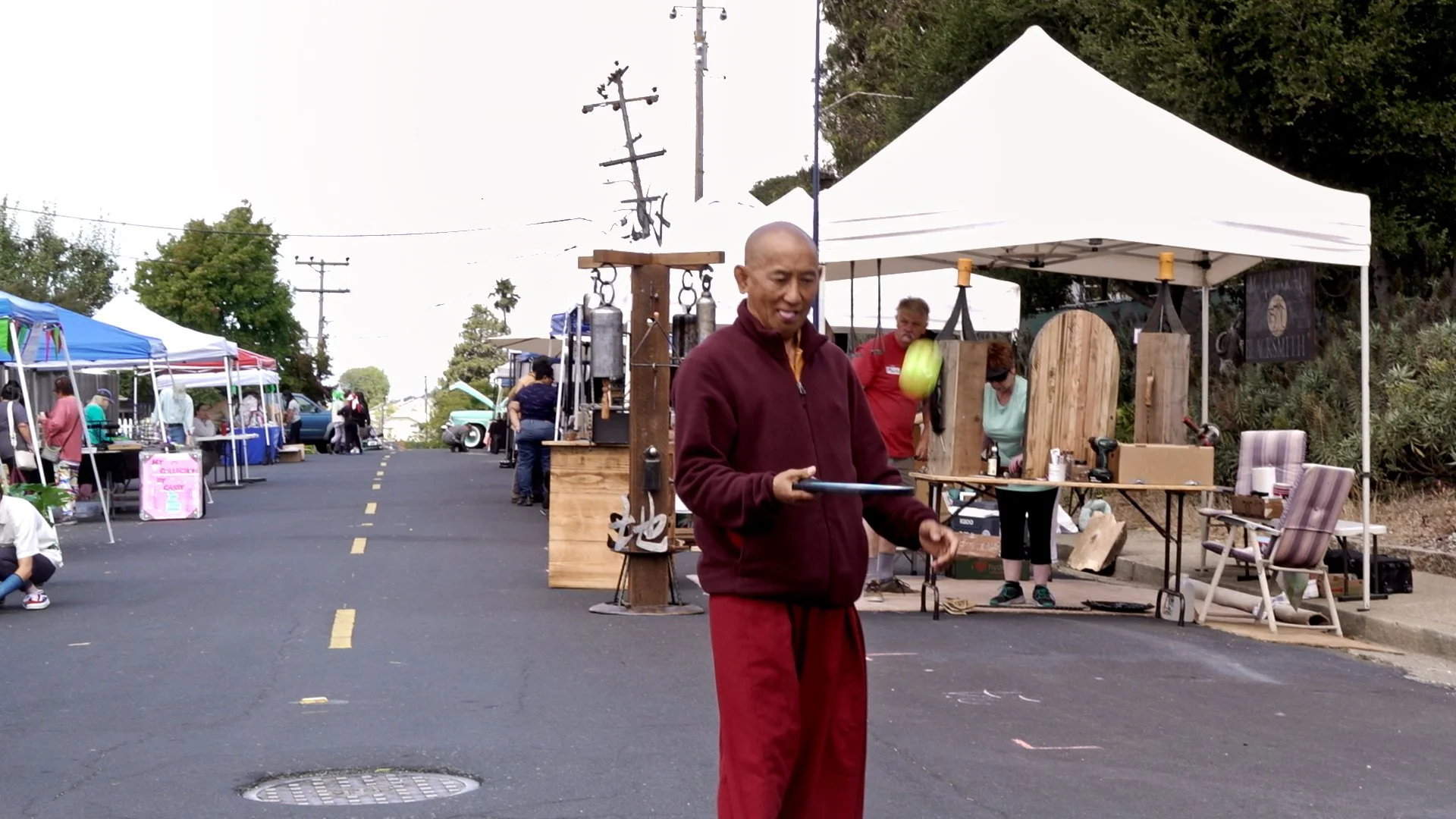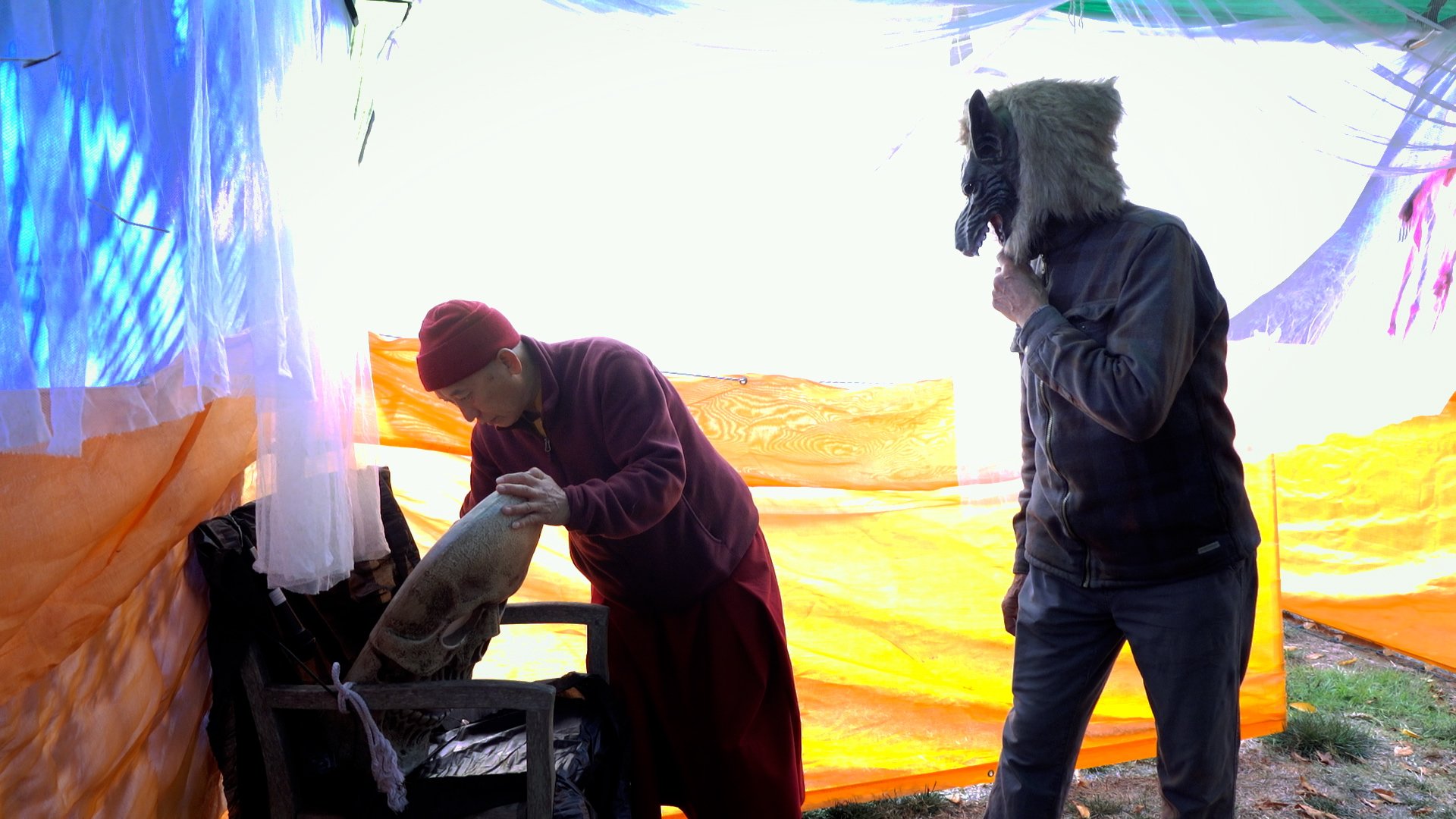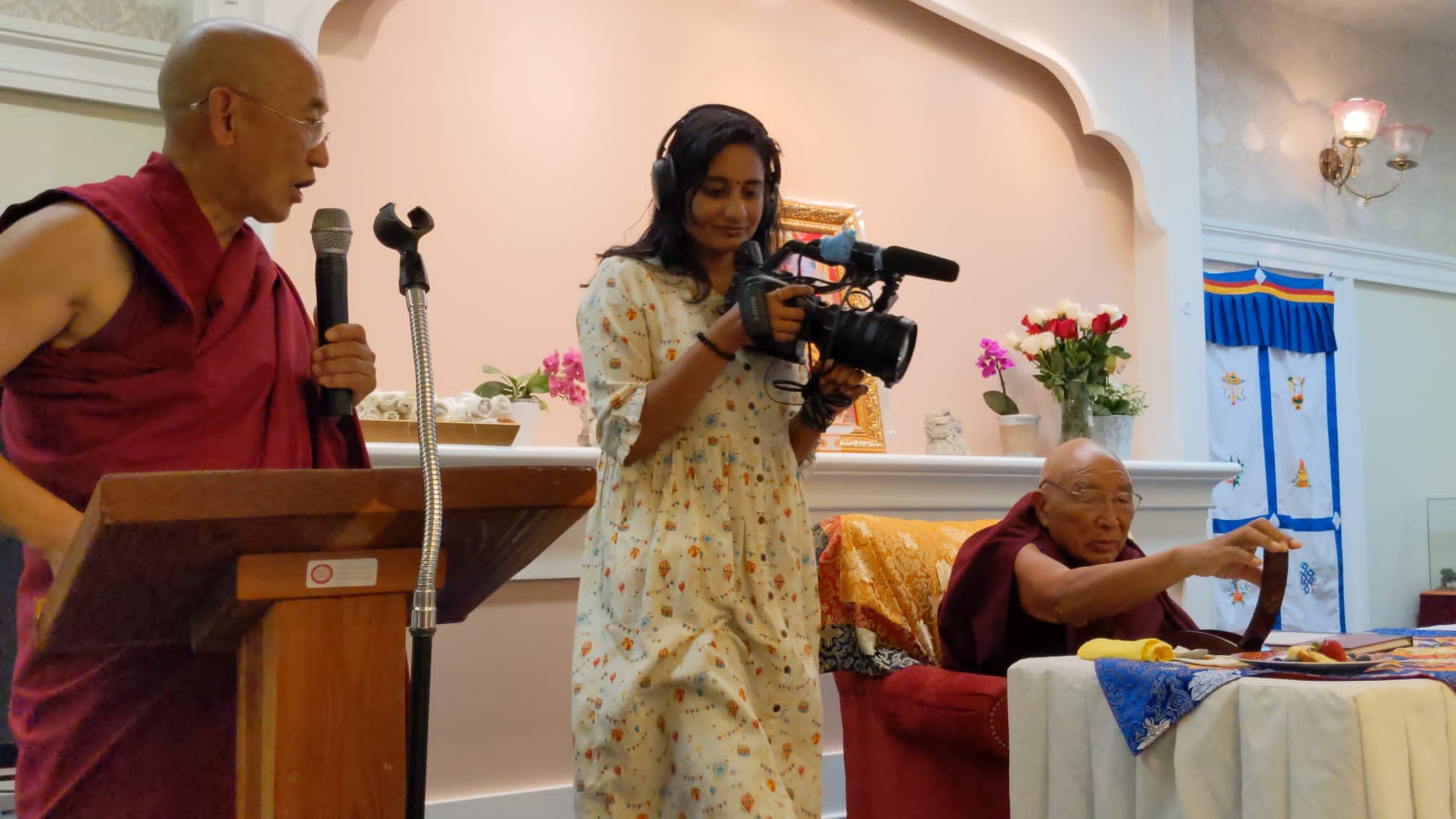SARAṆAM GACCHÂMI
Logline: Thupten Donyo, a visionary Buddhist monk from the Himalayan foothills of Nepal, leads one of the Bay Area's largest Tibetan monasteries—an invaluable sanctuary for Tibetan culture and community in the diaspora. He wears many hats at the monastery—prayer leader, spiritual guide, gardener, and even Halloween party planner! Now, nearing retirement, he hopes to find a worthy successor to carry forward the Monastery's legacy.
Run time: 19 minutes
Premiere Date: May 2024
Summary:
At 12, Pasang embraced a monastic life and was bestowed with a new name, Thupten Donyo, signifying 'Buddha's teachings' and 'meaningful.' Reflecting on his childhood and the inspiration that propelled his exceptional journey, Donyo shares, 'If my name means 'meaningful,' I should be a person of meaning.' Born in the Himalayan foothills and raised as a Tibetan refugee, he bore witness to the struggles of his community, igniting a deep-seated desire to make a difference beyond his spiritual path, a commitment that would shape his life's work in cultural preservation.
In 1988, Donyo had the opportunity to travel to the United States with a group of fellow monks invited by the Grateful Dead, who were fascinated by the monks' unique chanting sound. This trip and subsequent travels exposed him to the growing Tibetan refugee community in the United States, particularly in East Bay cities. He recognized the need for a haven and cultural hub for his fellow Tibetans, so Donyo founded the Gyuto Monastery. Over the years, the monastery has become the largest Tibetan monastery in the Bay Area, serving as a second home for many Tibetans and nurturing their collective heritage.
Saraṇam Gacchâmi offers an intimate portrait of Thupten Donyo and his mission to sustain the Tibetan way of life. The film chronicles his life’s work and journey, highlighting his multifaceted role in balancing tradition and adaptation—a hallmark of the Tibetan diaspora. Donyo’s story explores the challenges and triumphs of safeguarding cultural heritage far from its homeland, reflecting the global efforts of Tibetan communities to sustain their identity in the face of displacement.
In an era where visibility is crucial, the film sheds light on the Tibetan people, a micro-minority facing unique struggles often overlooked by the broader public. It examines the delicate balance of faith and cultural survival as demographic shifts and migration patterns threaten the vitality of Tibetan institutions in exile.
By documenting Donyo’s work and the monastery’s pivotal role, Saraṇam Gacchâmi captures a community at a crossroads. It ensures the Tibetan struggle—and their enduring hope—remains in focus. Ultimately, the film is a testament to resilience, cultural preservation, and the spirit of a people determined to thrive despite the odds.









Book A Screening
We aim to inspire and educate audiences worldwide through Donyo’s story. With a strategic approach to distribution and community engagement, Saraṇam Gacchâmi will reach both national and international audiences. Our mission is to raise awareness about the occupation of Tibet and spark meaningful, thought-provoking conversations.
This critical issue has faded from public consciousness, with an entire generation largely unaware of it. We strive to change that—one screening at a time.
Pls, email priyanka.suryaneni@gmail.com for further details.
“The life of a monk — at least this particular monk — is in turns mundane, profound and silly.”
— SFGATE
Community Screenings
As part of our commitment to prioritizing the community, the film premiered at the monastery itself, offering audiences a rare chance to experience the location where much of the documentary was filmed. It was later screened at the Richmond City Council Chambers, in partnership with the Richmond Public Library, in the city where the monastery is located.
These screenings provided a fully immersive experience, featuring cultural performances, traditional Tibetan tea and cuisine, educational guides, and panel discussions with community members. Together, these elements fostered meaningful engagement and a deeper appreciation of Tibetan culture and the themes explored in the film.
Help us share this powerful story with the world. Host a screening for your community.
Audience Reactions
“This event was a full immersion into Tibetan culture through music, history, documentary and food.”
— Audience Survey
“Wonderful community resource and incredible film.”
— Audience Survey
Director’s Statement
Images of meditation and renunciation often come to mind when thinking of spirituality and Buddhist monks. But meeting Thupten Donyo, the founder of the Bay Area's largest Tibetan Monastery, offered me a different perspective. Here was a monk who seamlessly balanced spiritual life with the practical demands of running a community center—driving, managing communications, handling administration, and even fixing things with his own hands. This practical, grounded approach to spirituality first drew me to this project, and I became captivated by Donyo's warm, welcoming presence.
This project holds deep personal significance for me. As a recent immigrant to the Bay Area from India, I arrived just before the pandemic, navigating the challenges of a new country while beginning my own journey into Buddhism. Amid the isolation and upheaval, the Gyuto Monastery became my anchor. It was more than just a place; it became a community that offered me a sense of belonging.
For many displaced Tibetans who have made the Bay Area their home, Gyuto is a sanctuary, preserving their culture and traditions. I wanted to capture this story of a "home away from home."
Meeting Thupten Donyo and hearing his story helped me find the lens through which I wanted to approach this documentary. My camera became a constant companion during my frequent trips to Gyuto, allowing me to document its everyday rhythms and the profound work happening within its walls. Over the past year, I've filmed Donyo on various occasions—spanning 23 shoot days—resulting in a vérité-style film that captures the heart of this remarkable Monastery.
More Background Information
Immigration and Settlement in the East Bay
The Tibetan diaspora's significant presence in the East Bay can be traced back to the 1990 U.S. Immigration Act, which granted 1,000 special visas to Tibetans living in exile in Nepal and India. Since then, the Tibetan community has grown substantially in the region, with over 3,000 Tibetan Americans estimated to be living in Northern California.
The Gyuto Foundation
The Gyuto Foundation, central to this narrative, plays a crucial role in preserving Tibetan culture and heritage. Its history dates back to 1474 AD in Tibet. Following the Chinese occupation in 1959, 83 monks from the Gyuto Tantric Monastery fled to India, where they faced numerous hardships but maintained their practices. In 1975, they established a new monastery in Tenzin Gang, northeastern India, to preserve and promote Gyuto tantric traditions.
Representation and Challenges
Despite sharing some cultural similarities with other South Asian communities, Tibet has a distinct culture. However, Tibetans often find themselves underrepresented in mainstream media, news outlets, and the arts scene in the East Bay. This documentary serves as a step towards providing better visibility to East Bay's micro-minorities and contributes to a broader discourse on cultural preservation and the resilience of marginalized communities.






